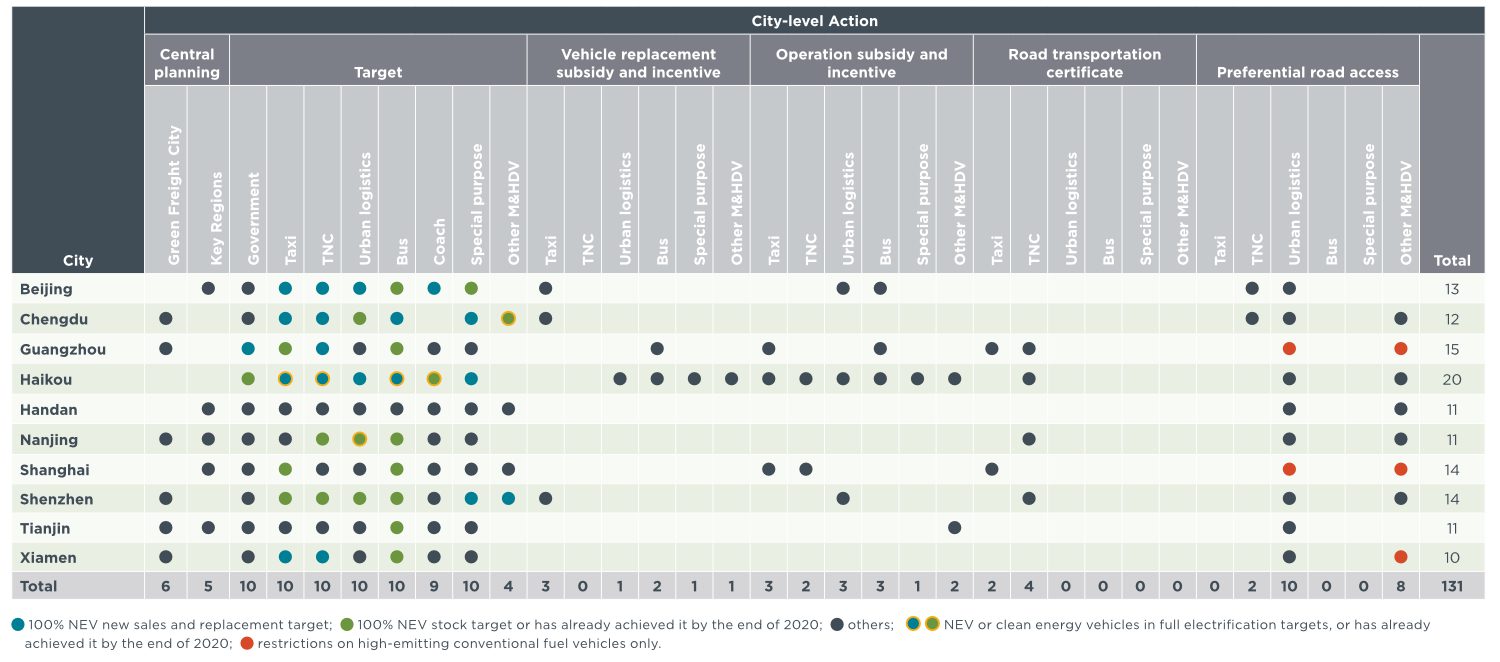Report
Accelerating new energy vehicle uptake in Chinese cities: Assessment of new energy commercial vehicle policies
Cities in China are using a broad range of incentives to electrify the commercial vehicle fleet. This report reviews major policies for new energy commercial vehicles (NECVs) in 10 cities and the relevant national policies that guided city actions and then compares these incentives with market performance in 2020. Widely used tools included operation subsidies, preferential road access, restricting the use of conventional fuel trucks on heavy-pollution days, and phasing out road transportation certificates for conventional fuel taxis and other commercial cars.
The experiences of these cities provide valuable lessons on how to boost NECV adoption in China and elsewhere. Among the recommendations: Consider putting additional requirements on vehicle owners and users to qualify for government fiscal or other support. The review also found that central policies were the main driver for the adoption of new energy medium- and heavy-duty vehicles (M&HDVs). Thus, China could look at further encouraging local policies to accelerate the uptake of these vehicles.
The table below shows six categories of incentives and how their implementation varied by city. Six of the highlighted cities participated in a national Green Freight Initiative program to promote more new energy urban logistics vehicles. These cities, on average, had 13 times the registrations and 4 times the market share of non-Green Freight cities in terms of newly registered new energy urban logistics vehicles in 2020.
Table. Overview of NECV policy and incentive by city, 2020
